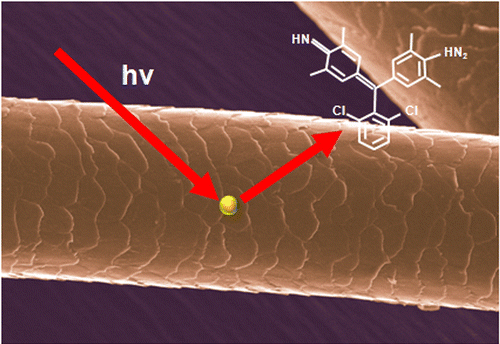Hair dye 'CSI' could help police solve crimes

Criminals with a penchant for dyeing their hair could soon pay for their vanity. Scientists have found a way to analyze hair samples at crime scenes to rapidly determine whether it was colored and what brand of dye was used. Their report appears in the ACS journal Analytical Chemistry.
Richard P. Van Duyne and Dmitry Kurouski note that analyzing hairs for forensic investigations, despite what TV shows would have you believe, can be a labor-intensive and flawed process. Testing samples for DNA requires an intact bulb or root, which isn't always present. Plus, the procedure is time-consuming, which can cause a large backlog of cases. So investigators will often opt to use the more traditional method of visually comparing hair from a crime scene with samples from suspects using a microscope. But this technique doesn't necessarily provide conclusive results. Van Duyne and Kurouski wanted to find a more practical and accurate way to analyze hair.
The researchers turned to surface-enhanced Raman spectroscopy (SERS) with a portable Raman spectrometer. SERS can detect minute amounts of illicit drugs, explosives, gunshot residue and body fluids. With this method, the team could rapidly confirm whether hair samples, even microscopic ones, were dyed and what brand of colorant was used. This highly sensitive technique could help forensic investigators analyze hair quickly in the field, the researchers say.
More information: In Situ Detection and Identification of Hair Dyes Using Surface-Enhanced Raman Spectroscopy (SERS). Anal. Chem., Article ASAP. DOI: 10.1021/ac504405u
Abstract
Hair is one of the most common types of physical evidence found at a crime scene. Forensic examination may suggest a connection between a suspect and a crime scene or victim, or it may demonstrate an absence of such associations. Therefore, forensic analysis of hair evidence is invaluable to criminal investigations. Current hair forensic examinations are primarily based on a subjective microscopic comparison of hair found at the crime scene with a sample of suspect's hair. Since this is often inconclusive, the development of alternative and more-accurate hair analysis techniques is critical. In this study, we utilized surface-enhanced Raman spectroscopy (SERS) to demonstrate that artificial dyes can be directly detected on hair. This spectroscopic technique is capable of a confirmatory identification of analytes with single molecule resolution, requires minimal sample, and has the advantage of fluorescence quenching. Our study reveals that SERS can (1) identify whether hair was artificially dyed or not, (2) determine if a permanent or semipermanent colorants were used, and (3) distinguish the commercial brands that are utilized to dye hair. Such analysis is rapid, minimally destructive, and can be performed directly at the crime scene. This study provides a novel perspective of forensic investigations of hair evidence.
Journal information: Analytical Chemistry
Provided by American Chemical Society




















